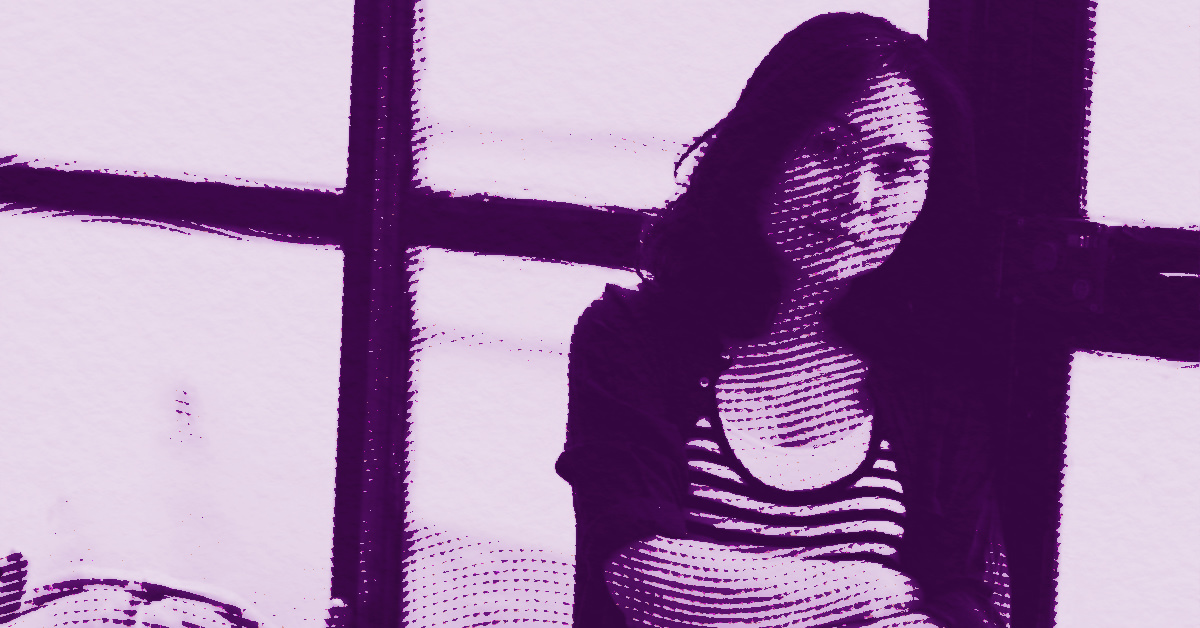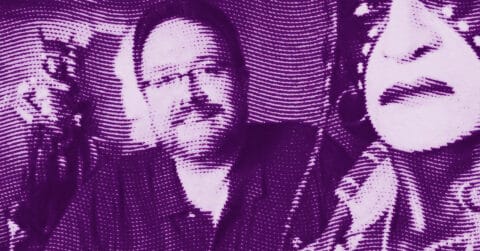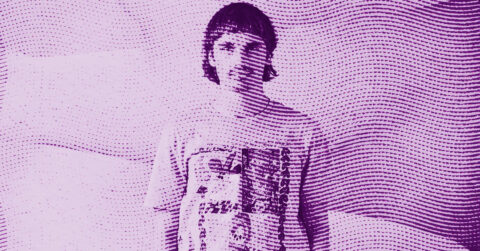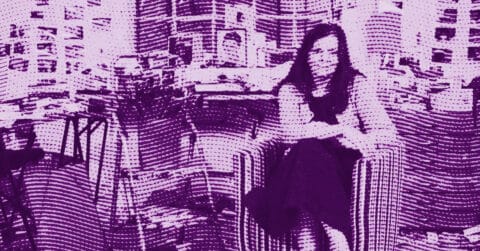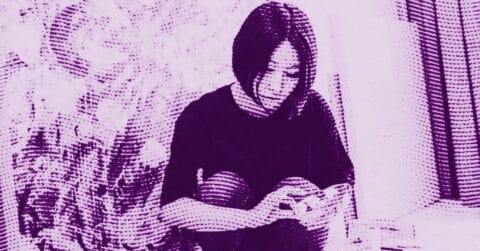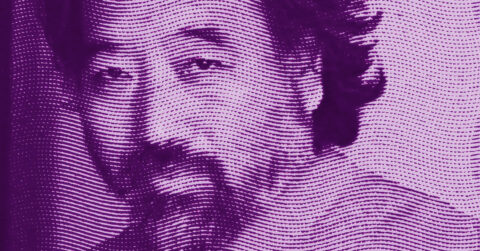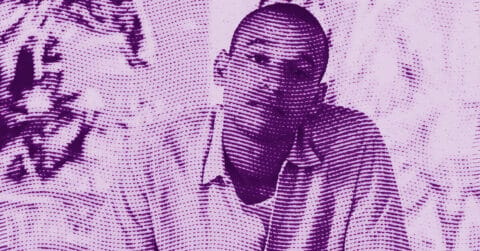Listen to me carefully, you bunch of snobs: what Ju Ting achieves in her Beijing studio deserves more than your polite nods towards these shattered surfaces that you too quickly label as “contemporary abstraction.” This woman, born in 1983 in Shandong province, does not simply mishandle acrylic on wood boards. She performs a surgery of appearance that reveals, under the scalpel or hammer, the layered truth of our modern condition.
Trained in the engraving department of the Central Academy of Fine Arts in Beijing, graduated in 2007 and then holding a master’s degree in 2013, Ju Ting has never quite left the world of printmaking. Her artistic gestures carry the memory of the press, the burin, that mineral patience required by engraving. However, instead of digging into copper, she cuts into the very accumulation of paint. Instead of printing ink on paper, she turns the painting into a volume that one could almost grasp with both hands. Her series Pearl, +-, Untitled, Amber, or Deep Waters Run Quiet bear witness to a methodical exploration of what painting can become when it refuses to be only a surface.
The German architect Gottfried Semper wrote in Der Stil in 1860 that the origin of architecture resided in textile, in this Bekleidung, this “covering” or “clothing,” which envelops and defines space even before the load-bearing structure [1]. For Semper, the wall (Wand) and the garment (Gewand) share a common etymology, and this linguistic kinship is not accidental: both simultaneously conceal, protect, reveal, and mask. The essence of architecture would therefore not be in the framework, but in this skin that covers and signifies it. Now, Ju Ting’s work precisely questions this dialectic of Semper of veiling and unveiling. Each layer of acrylic she applies on her wooden panels constitutes a new covering, an additional stratum added to the chromatic memory of the work. These successive layers are not mere additions: they create an architecture of color where each level simultaneously becomes structure and ornament, support and surface.
When Ju Ting incises her Pearl series, she does not destroy: she undresses. She removes superficial layers to expose hidden depths, exactly as Semper theorized that architectural ornament should reveal constructive truth while transfiguring it. In the Pearl series, delicate incisions trace furrows that lay bare lower strata. The artist does not merely apply paint; she constructs a pigmented wall which she then decides to pierce, split, or open. This gesture resembles the way the architect must manage the tension between the structural core and the artistic form of the covering. Ju Ting works with this very tension: her works have a physical depth that brings them closer to sculpture, but they retain pictorial frontality. They are wall-paintings, Wände-Gewände where color becomes architecture and architecture becomes ornament.
The series +- takes this logic even further by playing on spatial opposition. The vertical bands she cuts into the pictorial material create rhythms that evoke the flutes of an ancient column or the folds of a tapestry. Semper insisted that textiles, with their folding and draping properties, profoundly informed spatial design. Ju Ting’s vertical slits function like inverted folds: instead of creating undulations by adding material, she generates relief by subtraction. It is a Bekleidung in reverse, a calculated undressing that exposes the buried chromatic complexity. Each crack becomes an open window onto the layered interior of the work, transforming the surface into a pierced façade where one can observe the temporal thickness of the creative process.
In the Untitled series, Ju Ting intensifies her destructive method. She tears, rips, and folds large sections of solidified paint, creating compositions where the violence of the gesture contrasts with the sensuality of the revealed hues. These works resemble buildings whose facing has been stripped away to show the colorful foundations that compose them. Semper affirmed that architecture reaches its aesthetic form when the covering element detaches from its material base to become an autonomous aesthetic phenomenon. Ju Ting reverses this process: she physically detaches the pictorial coating, but in doing so, she does not distance it from its material base; on the contrary, she reveals that the base itself is only additional layers, that all depth is merely an accumulation of surfaces. There is no structural core hidden beneath the ornament; there is only ornament all along, from the stratified epidermis down to the wooden support.
This architectural conception of painting reaches its pinnacle in the installation Winter is Coming (凛冬将至), presented in 2021 at the Urs Meile gallery in Beijing. The massive work, composed of sixteen assembled panels, was created in situ following a rigorous protocol: Ju Ting superimposed hundreds of layers of acrylic in a heated space, then exposed the whole to cold to harden the material before striking it with hammers. The result is a shattered golden surface, riddled with craters and fissures that reveal the underlying chromatic strata. This work perfectly embodies Semper’s theory: the superficial gilding acts as a luxurious Gewand, a garment of wealth and power, that the hammer blows tear apart to reveal the hidden structural complexity. Ju Ting does not build a wall only to cover it with ornaments; she makes the succession of ornaments the very structure of the wall. Her chromatic architecture does not acknowledge the dichotomy between structure and cladding: for her, the cladding is the structure, and the structure exists only as a sedimentation of claddings.
But Ju Ting’s work is not limited to this architectural dimension. It also explores a psychic topography that recalls Freudian theories on the stratification of the human mind. Sigmund Freud, in his topographical model of the psychic apparatus developed at the end of the 19th century, proposed a layered conception of consciousness: the conscious, accessible and visible; the preconscious, retrievable but temporarily hidden; and the unconscious, deeply buried, repressed, resistant to emergence. This mental architecture finds a troubling echo in Ju Ting’s methodology. Each layer of paint she applies can be read as a temporal stratum of experience, each new application covering and repressing the previous one in the darkness of the pictorial interior.
The Pearl series perfectly illustrates this psychoanalytic mechanism of repression and resurgence. Ju Ting meticulously overlays her monochrome acrylic layers, enclosing each shade beneath the next, exactly as the psyche progressively represses memories, traumas, desires into the depths of the unconscious. Then, armed with her knife, she performs what Freud would call a “lifting of repression”: she incises the surface, she opens breaches into consciousness to allow the repressed to resurface. The colorful filaments she lifts and exposes are like symptomatic formations, returns of the repressed that emerge at the surface despite defense mechanisms. The artist herself becomes an analyst of her own creation, digging through the layers to exhume what had been intentionally buried under the weight of successive applications.
This psychoanalytic reading intensifies when considering the artist’s own words. In an interview in 2021, Ju Ting explained that by striking the panels of Winter is Coming, she found “the rebellious girl” buried in her since childhood [2]. This statement reveals an auto-analytic dimension of the creative process: the act of destroying the smooth, golden surface, that of the “model little girl” she was supposed to embody, frees a repressed part of her personality, a violence and freedom long contained. The hammer becomes the instrument of a gestural psychoanalysis, and each blow that breaks the golden façade brings forth not only hidden colors but also the dark parts of the self.
The Untitled series takes this logic even further by abolishing the chronological order of the layers. Ju Ting explains in an interview in 2019: “The Untitled series disperses this sequence. I take samples from the middle and reorganize them” [3]. This temporal deconstruction evokes the very functioning of the Freudian unconscious, where linear time does not exist, where past and present coexist without hierarchy. By tearing and folding hardened paint pieces, arranging them without respecting their application order, Ju Ting creates surfaces that resemble maps of the unconscious: territories where different temporal layers surface simultaneously, where ancient repression coexists with recent defenses in a new and unsettling configuration.
The large tears of the Untitled series also evoke traumas that fracture the coherence of the self. Freud described trauma as a violent breach of the psyche’s protective barriers, leaving lasting traces in the mental structure. The violent removals Ju Ting inflicts on her pictorial surfaces can be read as representations of such breaches: superficial coherence is brutally broken, exposing vulnerable depths. But unlike pathological trauma, these pictorial wounds are creative: they generate new aesthetic configurations, transforming destruction into an opportunity for revelation. The artist controls and theatricalizes the trauma, converting it into a source of beauty rather than suffering.
Ju Ting’s color palette reinforces this psychoanalytic interpretation. Her colors, these acidic greens, deep purples, cadmium yellows, or cobalt blues, are not chosen for their conventional harmony. They rather evoke the emotional intensity of unconscious affects: the libidinal charge, anxiety, desire, and anger. When these hues emerge beneath the artist’s incisions, they seem to carry contained psychic energy, as if each buried layer has preserved its affective charge intact. The brutal juxtaposition of contrasting tones in the +- and Untitled series creates a visual tension that mimics the inherent conflictuality of the human psyche, where contradictory drives confront each other with no possible resolution.
The most recent Amber series (2022, 2025) introduces an additional dimension to this psychoanalytic exploration: that of fossilization and preservation. Amber, this vegetal resin that traps and preserves fragments of the past, becomes a metaphor for the unconscious memory. Freud insisted that nothing is ever truly lost in the unconscious; everything remains preserved there, available for possible resurgence. The works in the Amber series, with their translucent surfaces and geometric patterns that create optical refraction effects, precisely evoke this process of transparent preservation. The chromatic layers, visible through transparency beneath the surface, are like memories accessible but distorted by the prisms of memory and psychic defense.
Ju Ting’s practice thus fits into a dual lineage: architectural and psychoanalytic, semperian and Freudian. She constructs chromatic edifices according to the principles of Bekleidung, then subjects them to destructive analysis that reveals their stratified structure. Her works are simultaneously buildings and psyches, facades and depths, surfaces and abysses. This conceptual duality confers upon her work a theoretical richness that far exceeds the framework of conventional pictorial abstraction.
It would be reductive to classify Ju Ting among the Chinese abstractionists of her generation without recognizing the radical specificity of her approach. Yes, she participated in major group exhibitions, “Painting and Existence: Chinese, Japanese, and Korean Abstract Painting” in 2020 and “The Logic of Painting” in 2021, and her works are featured in prestigious collections such as the National Art Museum of China in Beijing, the White Rabbit Gallery in Sydney, and the Arario Museum in Seoul. But what distinguishes her work from that of her contemporaries is precisely this double theoretical inscription that I have attempted to elucidate. Where others explore color for itself or gesture for its dynamism, Ju Ting constructs a coherent conceptual system that articulates architecture and psychoanalysis, surface and depth, revelation and concealment.
Her working process, which she describes as almost bureaucratic, “朝九晚五” (nine-to-five), like an office job [4], contrasts radically with the romantic image of the inspired artist. This daily discipline is not trivial: it allows the patient accumulation of layers, that temporal sedimentation which constitutes the very material of her exploration. Each work session adds a stratum to the pictorial “wall,” and only after weeks or months of accumulation can the critical moment of incision or destruction occur. This long temporality, inherited from her printmaking training, opposes the gestural immediacy of Western abstract expressionism. Ju Ting does not seek the instant of inspiration; she cultivates geological patience, the kind that allows layers to solidify, to form a coherent mass that it will be possible to question, to split, to reveal.
The feminist dimension of her work, although the artist does not explicitly claim it, also deserves to be highlighted. As a female artist in the contemporary Chinese context, Ju Ting is part of a generation that seeks to assert a female subjectivity in an artistic discourse long dominated by men. The accompanying text of her Amber exhibition at the Urs Meile gallery notes that she is positioned in “a silent dialogue with historical female artists who challenged the patriarchal-dominated artistic discourse.” Her practice of layering and unveiling can be read as a metaphor for the social and psychological layers that women must negotiate in their identity construction. The controlled violences she inflicts on her surfaces, the incisions, tears, and hammer blows, could also be interpreted as a liberation of frustrations and constraints imposed by social norms.
The international art market has begun to recognize Ju Ting’s uniqueness. Her solo exhibitions in the spaces of the Urs Meile gallery, in Lucerne in 2018 and 2021 and in Beijing in 2019 and 2021, testify to growing visibility in the West. But beyond commercial success, it is the coherence of her path that impresses: from her first semi-figurative explorations in 2013 to the monumental installations of 2021, through the technical refinement of the Pearl and Amber series, Ju Ting has continually dug the same conceptual furrow. Each new series is not a break but an organic development, “like bamboo growing by successive nodes,” according to her own metaphor. This fidelity to a unique research, carried out with rigor and without compromise, makes her much more than a fashionable artist: a stubborn researcher of still unexplored possibilities of painting.
We live in an era where contemporary art disperses in a thousand directions, where every artist seems to want to invent ex nihilo their own language without reference to history. Ju Ting, on the contrary, consciously situates herself within deep theoretical lineages, those of Semper, those of Freud, but also the more specific tradition of Chinese layering and patient refinement. Her Beijing studio becomes the place of an improbable synthesis between Western thought and Eastern practice, between 19th-century architectural theory and Viennese psychoanalysis, between the artisanal discipline of printmaking and the gestural freedom of destruction. This ability to hybridize disparate sources without betraying them, to build conceptual bridges without sacrificing rigor, makes Ju Ting a major figure of contemporary Chinese art.
Her works will continue to defy our usual categories. Painting or sculpture? Architecture or psychoanalysis? Construction or destruction? Surface or depth? Ju Ting refuses these dichotomies. She forces us to think about complexity, to accept that art can simultaneously be several contradictory things, that creation can be born as much from patient accumulation as from liberating violence. In an artistic landscape too often dominated by the spectacular and the immediate, she proposes a different temporality, that of geological sedimentation and archaeological excavation. She reminds us that beneath every surface lie unsuspected depths, that behind every smooth facade hide layers of memory, work, and accumulated time. And that the most fruitful artistic act may be precisely to reveal these hidden depths, to tear the veils to expose the stratified truth that lies beneath.
- Gottfried Semper, Der Stil in den technischen und tektonischen Künsten oder praktische Ästhetik, Munich, 1860-1863.
- “鞠婷个展” Dong! Dong!” opening scene” (The opening of the solo exhibition of Ju Ting “Dong! Dong!”), Artron Art News, December 6, 2021.
- “鞠婷个展” Scales” opening scene” (The opening of the solo exhibition of Ju Ting “Scales”), Artron Art News, September 27, 2019.
- Ibid.

